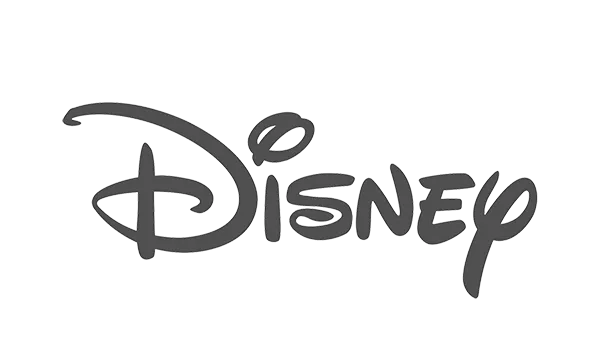The primary function of corporate culture committees is to develop and improve organizational culture. These teams play an essential role in recruitment because they craft the company culture that is referred to in employer branding. They are also responsible for creating opportunities to deepen the employer-employee relationships.
In order to do this job well, a culture committee must come up with multiple and ongoing ideas for building the culture the company wants. The best culture committee ideas align with organizational goals, improve employee engagement, and provide a sense of purpose. Let’s explore some that you can implement at your workplace.
25 Culture Committee Ideas
To help you get started, here’s a list of popular culture committee ideas you can use to foster a positive and inclusive culture at your workplace.
- Group Bonding Getaways
- Peer-to-peer Recognition Programs
- Community Service Activities
- Team Meals
- Shared Hobby Circles
- Open-Door Policy
- Town Hall Sessions
- Diversity and Inclusion Training
- Mentorship Programs
- Feedback Mechanism
- Flexible Work Arrangements
- Mental Health Initiatives
- Skill Enhancement and Continuous Learning
- Milestone Celebration
- Happy Hours
- Workspace Reconfiguration
- Employee Recognition Programs
- Buddy System
- Celebrating Diversity
- Promote Personal Interests
- Digital Collaboration Enhancements
- Sustainability Initiatives
- Employee Financial Wellbeing
- Physical Activity
- Self-Advancement Support
Let’s review each one of these in more detail.
1. Group Bonding Getaways
Most modern businesses understand the importance of team building and teamwork. Group bonding getaways are team-building events outside the conventional work environment. Depending on what your team prefers, these getaways can be activity-based or relaxation-focused. It’s best to get employee feedback on what the majority would prefer.
These team-building events give employees a chance to get to know each other on a personal level, make deeper connections, and build trust.
Depending on the kinds of activities organized at these getaways, a team building trip allows co-workers to build camaraderie in a way that wouldn’t have been possible in a conventional work setting.
2. Peer-to-Peer Recognition Programs
When an employee receives words of acknowledgment from colleagues who are “in the weeds” with them, it creates a sense of mutual respect and camaraderie.
Although all types of employee recognition are valuable, peer-to-peer recognition is specifically good for building a culture where employees see one another as allies. Formalizing peer-to-peer recognition by, for example, investing in employee recognition software ensures that there is a vehicle for recognition and acknowledgment to become part of your organization's day-to-day operations.

3. Community Service Activities
Community service offers employees a space where they can work together for a common cause without the potential competitiveness of a regular workplace.
Volunteering together allows employees to engage in meaningful work and develop a deeper understanding of how the community is a stakeholder in their organization’s success.
Here are some ideas for community service activities that culture committees can organize:
- Volunteer at a local animal sanctuary
- Take part in blood donation drives
- Organize beach or park cleaning events
- Prepare and donate backpacks to schools, filled with supplies
- Cook and distribute food to the homeless
Pro-tip: Due to a lack of experience, resources, and expertise, companies may need to partner with nonprofits in their area of interest to successfully execute such programs.
4. Team Meals
Food plays a key role in community building. It helps people connect safely and informally, providing a natural buffer between silences. This is why team meals can play a significant role in building organizational culture.
Shared meals allow team members to share stories and spend time together outside of regular work tasks. They learn about one another and the familiarity they develop often builds trust and better collaboration.
Pro-tip: Make team meals more effective by bringing random employees together from diverse backgrounds, experience levels, and different functions across the organization.
5. Shared Hobby Circles
Shared interests sustain relationships. Hobby circles allow team members to bond with each other over common interests and strengthen their relationships outside of a regular work setting.
Examples of activities shared hobby circles can be created around are:
- Books
- Running
- Cooking
- Cycling
- Hiking
- Bowling
- Dancing
- Yoga
- Fitness
6. Open-Door Policy
Easy and fluid communication is an essential element of a healthy organizational culture. An open-door policy means every manager’s door is open for every employee. According to SHRM, “Having an open-door policy helps foster open and candid communication. It gives your team an avenue to address any concerns as they surface.”
Having an open-door policy gives employees the confidence to share their concerns, ideas, or feedback without hesitation. It makes them feel heard and cared for.
Companies need to give employees opportunities to communicate with the management without any fear of repercussions or retribution. An open-door policy can help them create such an environment.
7. Town Hall Sessions
Town hall meetings are another element of a company culture that supports open two-way communication. Town halls are a way for the top management and employees to communicate openly and discuss everything from long-term company strategy to day-to-day operations.
These sessions facilitate easy communication between different management layers and help employees feel involved in the strategic decision-making of the company.
In addition to building company culture, town hall meetings align everyone involved with the company’s goals and bridge the gap between the management and employees.
8. Diversity and Inclusion Training
An inclusive modern company has to be a place that welcomes talented individuals regardless of their background, lifestyle, religion, gender, and sexual orientation. To leverage their diversity and create an environment conducive to teamwork, organizations can offer diversity and inclusion training to their employees.
Such training enables employees to be more aware of unconscious biases and microaggressions. It increases team members' awareness of sensitive issues about race, gender, sexual orientation, etc.
Ultimately, a workforce trained to be more inclusive can make every team member feel understood and heard.
9. Mentorship Programs
Research indicates that 90% of employees who have a mentor are happy at work. Mentorship is an effective way to introduce employees to the company culture and set them up for success.
Mentorship programs allow new hires to pair up with an experienced team member who becomes their guide, helps them integrate into the organization, and provides strategic guidance on their career trajectory.
Having a mentorship program as part of your company culture shows you care about nurturing new talent and preparing leaders for tomorrow.
10. Feedback Mechanism
Let your company culture become a source of continuous improvement through employee feedback mechanisms. Establish several channels for the employee voice to be heard and for individuals at every level to provide feedback regarding various aspects of the organization. This can include online and offline surveys, 360-degree review strategies, suggestion boxes, and other anonymous feedback tools.
An organizational culture that encourages employee feedback can help managers better understand employee satisfaction levels and areas of improvement.
Moreover, such a practice can help organizations generate useful ideas for innovation.
11. Flexible Work Arrangements
A work culture that encourages employees to maintain a healthy work-life balance can be a significant motivator for potential and existing employees. Such a culture prioritizes employee physical and mental well-being.
A few options that can give team members more control over their time include:
- Extended breaks
- Remote work
- Hybrid work
- Flexible schedules
12. Mental Health Initiatives
In the last few years, mental health has been recognized as a legitimate and important indication of employee well-being.
Due to digital communication tools such as smartphones and instant messaging, it isn’t unusual for employees to remain connected with their workplace after work hours and over the weekends. The possibility of instant feedback is always there, creating a sense of expectation that employees must be “always on”. This can easily lead to high levels of stress and eventual burnout.
Organizations can help employees deal with anxiety, stress, and other mental challenges that come with such high-pressure work environments.
More specifically, companies can offer workshops, counseling, and mental health breaks to employees as part of a culture that supports mental well-being.

13. Skill Enhancement Classes
A culture of continuous learning is a culture of constant growth. It allows employees to get frequent opportunities to learn or upgrade their skills. Enhancing employee skills and investing in their professional development are among the most mutually beneficial initiatives an organization can take for its employees.
In addition to the obvious benefits of better knowledge and improved performance, skill-enhancement activities can make employees feel valued, motivated, and engaged.
Companies can implement a culture of continuous learning by offering courses or learning opportunities and reimbursing employees for external certifications of their choice. The program can also support their enrollment in training, workshops, and seminars relevant to their industry by providing paid time for attendance, transportation, and other resources that would make learning accessible.
As with all programs that improve employee skills and knowledge, the organization benefits from this investment when employees contribute their newly acquired knowledge to the company’s success, such as via cross-training. Upgrading employee skills ensures they remain in sync with industry standards and keep on delivering top-quality work.
14. Celebrate Milestones
Acknowledging and celebrating employee achievements is an essential part of a healthy work culture. Companies can recognize employee achievements in many different ways, including plaques, award titles, public recognition ceremonies, and performance bonuses.
Celebrating milestones fosters a positive work culture that motivates top performers and inspires the rest to follow their example.
15. Happy Hours
Whether you’re managing remote workers or an on-site team, happy hours can help employees reduce stress, improve teamwork, and boost morale.
Let employees get together in person or virtually to just relax or take part in fun activities such as:
- Having virtual lunches
- Playing trivia games or Pictionary
- Organizing treasure hunts
16. Workspace Reconfiguration
The office floor plan plays a significant role in shaping a company’s work environment. An open floor plan affects how employees interact with each other. The amount of natural light in the workspace can impact overall team mood and stress levels. Furthermore, wall signage and interior design can motivate and inspire employees.
Pro-tip: Invite employees from all across the organization to participate in choosing a look and feel for their workspace.
17. Employee Recognition Programs
Developing a culture that recognizes and rewards individuals for exceptional performance is essential to having an engaged workforce. Employee recognition program ideas include:
- Shout-outs
- Awards
- Bonuses
- Promotions
- Public announcements.
Overall, a company culture where employees feel recognized by their managers and leadership helps to create a positive work environment. Recognition keeps employees' motivation high and turnover rates low.
18. Buddy System
A buddy system entails pairing up new hires or employees in new roles with a more experienced team member. This employee onboarding strategy facilitates cross-department communication and helps employees learn the day-to-day tasks and processes at an organization.
The idea may sound similar to mentorship but they’re different concepts. Mentorship provides formal guidance and honest feedback. The mentor also addresses strategic questions related to a new hire’s career trajectory.
On the other hand, work buddies offer tips, advice, and tactical information with a focus on the employee’s short-term success. Assigning a buddy also means a new hire or team member feels included from their first day.
19. Celebrating Diversity
Celebrating diversity in the workplace is at the core of a work culture of inclusivity where employees of all sorts of backgrounds feel heard and respected.
An organization that celebrates diversity gives its employees the confidence to come forward with their ideas without the fear of being judged because of their background.
Organizations can celebrate diversity by acknowledging and celebrating the unique qualities and values each team member adds to the company culture. Events like National Dress Day and National Food Day are examples of such celebrations. Employees can be encouraged to share and celebrate their own background while educating their colleagues on their heritage.
20. Digital Collaboration Tools
A modern organization needs to collaborate using modern tools. In the post-pandemic world, where remote and hybrid work is a norm, companies need to ensure their employees have access to the right collaboration tools and the know-how to use them effectively.
Tools like Slack, MS Teams, Asana, and Trello can transform how teams work together on projects, especially in remote work settings.

21. Sustainability Initiatives
As responsible corporate citizens, organizations can adopt sustainable practices that are better for the environment.
Examples of such practices are recycling, using green energy, using environment-friendly materials for office furniture, choosing suppliers and vendors that offer sustainable solutions, and promoting plant-based food.
Companies can use their communication channels and town hall events to further explain and reinforce sustainability concepts to employees and answer any questions. These practices can shape employee behavior beyond the workplace and help educate their friends and family too.
22. Employee Financial Well-being
A company culture that prioritizes employee physical and mental health also needs to address employee financial well-being. Companies can empower employees with the tools and knowledge they need to make smarter financial decisions. This can reduce stress and improve the quality of an employee’s life.
Specifically, companies can help employees learn more about personal finance, investment strategies, and retirement planning through workshops, training, and courses.
23. Physical Activity
A physically active workforce is a healthy workforce. Physically active employees are more likely to experience lower stress and better overall health. Culture committees can consider ideas such as
- Sports events
- Gaming tournaments on platforms such as Nintendo Wii Sports
- Fitness and yoga sessions
- Organizing fun runs and marathons
24. Self-Advancement Support
Building a culture that supports employees to grow personally and professionally can be a significant motivator for existing employees and can help companies attract top talent.
Each department can allocate a stipend for courses, books, seminars, etc, so employees can shape their careers the way they want and broaden their horizons.
Real-world Culture Committee Idea Examples
The impact of culture on organizational performance underscores the potential advantages of having a robust culture committee. A 2022 Ernst & Young Generation Survey showed that 92% of employees factor in company culture when deciding whether or not to stay with an employer.
Moreover, company culture influences employees to act sustainably inside and outside their work environment. Therefore, the impact of culture committees can go well beyond the workplace.
Let’s look at some examples of culture committees that successfully created positive organizational cultures at well-known companies.
Zoom’s Happiness Crew
At Zoom, the culture committee is called the Happiness Crew. The Crew keeps the company’s 8000+ employees worldwide connected through events, milestone celebrations, and volunteering opportunities.
Mentorship is also an important part of the company culture. Once new employees complete the onboarding process, they pair up with experienced colleagues who mentor and guide them through their journey with the organization.
A unique element of the culture at Zoom is that they organize events where employees can bring a child or parent to introduce them to the rest of the team. These close family members are usually a source of inspiration for the employees. Connecting them with the organization enables team members to build stronger bonds with their colleagues.
Google’s 20% Time
Google encourages employees to allocate 20% of their paid time to projects of personal interest. This could involve working on tasks the employee wasn’t primarily hired for, finding and fixing software bugs, or creating something entirely new.
The program is designed to foster a culture of creativity and innovation at the company. While many of the projects under this program never get to see the light of day, it has also produced several game-changing products for Google, such as Gmail, AdSense, Google News, and the now-defunct Orkut social media network.
Google’s “20% Time” program helps to establish a company culture where the employees are engaged, have creative freedom, and feel satisfied with their jobs.
Netflix’s Unlimited PTO
Netflix offers unlimited paid time off to employees as long as they meet work expectations. The top management at the company realized the number of hours employees spend at work is not a metric they use to gauge performance. Therefore, the company decided to give employees the freedom to decide the timing and duration of their PTO.
The underlying notion behind the concept was to establish a company culture where employees have better work-life balance and greater control over their lives.
Initially, the company had to make some adjustments to optimize for maximum efficiency. However, once the teething issues were addressed, the new unlimited PTO policy (or lack thereof) became a significant motivator for employees and an attraction for top talent in the industry.
Airbnb’s “Live There”
Airbnb gives its employees an annual $2000 stipend, paid quarterly, to stay at any Airbnb listing in the world. This fosters a culture where employees can truly immerse themselves in the company’s service and experience it firsthand.
This practice allows employees to put themselves in the customer’s shoes, uncover potential blind spots, and think of new ways to delight the customer. In addition, it also provides an opportunity for employees to connect with the host community and understand their perspectives better.
Moreover, the benefit allows employees to make good use of their paid time off and feel satisfied and rewarded for their hard work at the company.
HubSpot’s Mystery Dinner
HubSpot understands the importance of teamwork and, therefore, aims to create a work culture that strengthens team bonding. A popular element of the culture at HubSpot is the practice of sending employees to Mystery Dinners with team members.
Employees sign up for the date of the event but don’t get to find out where they’re going and who they’re going with until the afternoon of that day. A HubSpot leader hosts the event and the company covers the bill for the occasion.
The policy enables HubSpotters to meet new colleagues and make friends across various functions and experience levels at the organization.
Last Word on Culture Committee Ideas
Workplace culture defines the set of behaviors employees need to exhibit in addition to executing their skills to be successful. Company culture has the power to bring together employees from different departments, boost employee engagement, attract top talent, and even improve retention.
As we observed in the real-life examples, culture is more than just a nice-to-have set of perks for modern organizations. When done right, it can become a competitive advantage that drives results and aligns employee behaviors with company values.





















